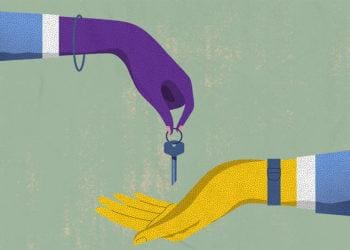It’s easy to think of your company’s board of directors as simply a group of individuals. But OnBoard’s Rob Kunzler says it’s actually a stew of personalities, with most people falling into one of five types. How can you make sure your blend is just right?
Companies tend to think about boards in terms of attendance, size or capacity to perform. But those metrics don’t necessarily speak to how well the board actually functions, though they are certainly easier to measure. Personality tests are gaining steam for rank-and-file employees; maybe it’s time they came to the boardroom, too.
“It’s more about the emotional traction that’s going on in the group. It’s more about psychology than ever before,” says Boardwise CEO Donna Hamlin, who has researched board personalities and board styles.
Finding the right group dynamic can have a huge impact on the effectiveness of your board. Too many Arsonists could burn the whole thing down, but too many Super Followers could lead you in circles. Let’s look at five board personality types and how they contribute to the function (or dysfunction) of a corporate governance board.
5 board personalities and styles
Arsonist: This type of board member is highly creative. These are people who have 90 ideas before breakfast and thrive on problem-solving because they believe everything is possible. They blow things up just for the fun of recreating them. They are affectionately nicknamed Arsonists, but they are valuable change drivers who excel at inspiring others with creative solutions to challenges.
Super Follower: Their style is all about teamwork. They’re gifted at relationships and tend to be diplomatic. They’re sensitive to the social mores of the group and to what makes constructive, healthy dialogue. Nicknamed Super Followers, they’re the unifiers of the group.
Long Ranger: They’re the workaholics of the group who come in early and stay late. They’re nicknamed Long Rangers and are the challengers who are passionate and articulate about where the board stands today. They’re great at setting goals and challenging the board, facilitating the possibilities for change moving forward. They hold people accountable and make sure things happen on plan and on time.
Bureaucrat: This type of board style is detail-oriented. The Bureaucrats are your adviser/expert board personalities who are the regulators of the group. They rely on systems and processes. Their patterns are predictable, and they want everyone to follow the rules.
Politician: This is the rarest personality of all, a statesman who has equal parts of the other four personalities. Nicknamed Politician, the statesman is excellent at brokering deals. This type of board personality is so rare that they are hard to replace and therefore tend to stay a long time.
As the Great CEO Resignation Continues, Does Your Board Have a Succession Plan in Place?
High-profile CEO departures put a fine point on a broader corporate trend: Top company leaders are exiting their roles in 2022 in greater numbers than early in the pandemic. Making the wrong hire at CEO can be devastating for a company.
Finding the right mix
What boards should be looking for is a healthy composition of different board personalities and styles. According to PwC’s 2022 survey of corporate directors, almost half of directors (48%) think one or more of the members of their board should be replaced.
If your board has too many Long Rangers, you may have to rely on Super Followers to break up the heated discussions that might ensue. Long Rangers can be too blunt and may need to work on developing their diplomatic skill set.
Arsonists can be a bit overwhelming for the group. They’re the type of people who might say something like, “Forget that idea I told you about yesterday, I’ve come up with a new one. You can’t change my mind. I’ve already changed it.” Here’s where Super Followers can keep Arsonists from monopolizing the conversation.
At the same time, Super Followers need to work on speaking up when they disagree, even if it risks disrupting the harmony of the group. And because Bureaucrats are subject matter experts, they tend to stay in their lane and defer to others. They need to be encouraged to expand their knowledge and develop a strategic balcony view of the business to understand it in a broader way.
Digital board tools
Boards can use a skills tracking matrix to gain insights into competencies for better visibility into current board composition. Quickly identify your board’s experience in specific areas and highlight gaps, then act or build a recruiting plan that fits your organization’s strategic direction.
A board governance platform secures and enhances routine board activities. An agenda-tracking tool can break down exactly how long specific participants talked or what percentage of the meeting was dominated by a specific conversation. A red pace-line tells you where you are on the agenda, allowing for course-correction in real time.
Gathering feedback is vital to understand board members’ perceptions of meetings. Board governance management software allows you to automatically request assessments from participants after each meeting to highlight areas for improvement.
Diversity of ideation
While diversity is often thought of in terms of gender and cultural background, boards should also consider diversity of thought. “The way we solve problems isn’t always the same. If we increase diversity of thought, we get more impact,” Hamlin said.
Do you have a culture that is respectful, candid and that welcomes open dissent? Boards should incorporate DEI metrics into their evaluation process. Canadian Prime Minister Justin Trudeau has said, “Diversity is a fact; inclusion is a choice.” Hamlin has a slight amendment: “Diversity is a fact. Inclusion is a competency.”
A well-run board establishes a grounded sense of confidence for leadership, which is felt throughout the company. It starts with creating a space for the board to thrive. Ideally, you want your board to be a source of peace and productivity.
It’s important to understand what various board personalities and styles bring to the table and how to leverage that talent to build a more effective, well-rounded board. It takes systemic investment in the right people and tools to create a high-performing board equipped to face the challenges ahead.




 Rob Kunzler is chief marketing officer of OnBoard.
Rob Kunzler is chief marketing officer of OnBoard. 









